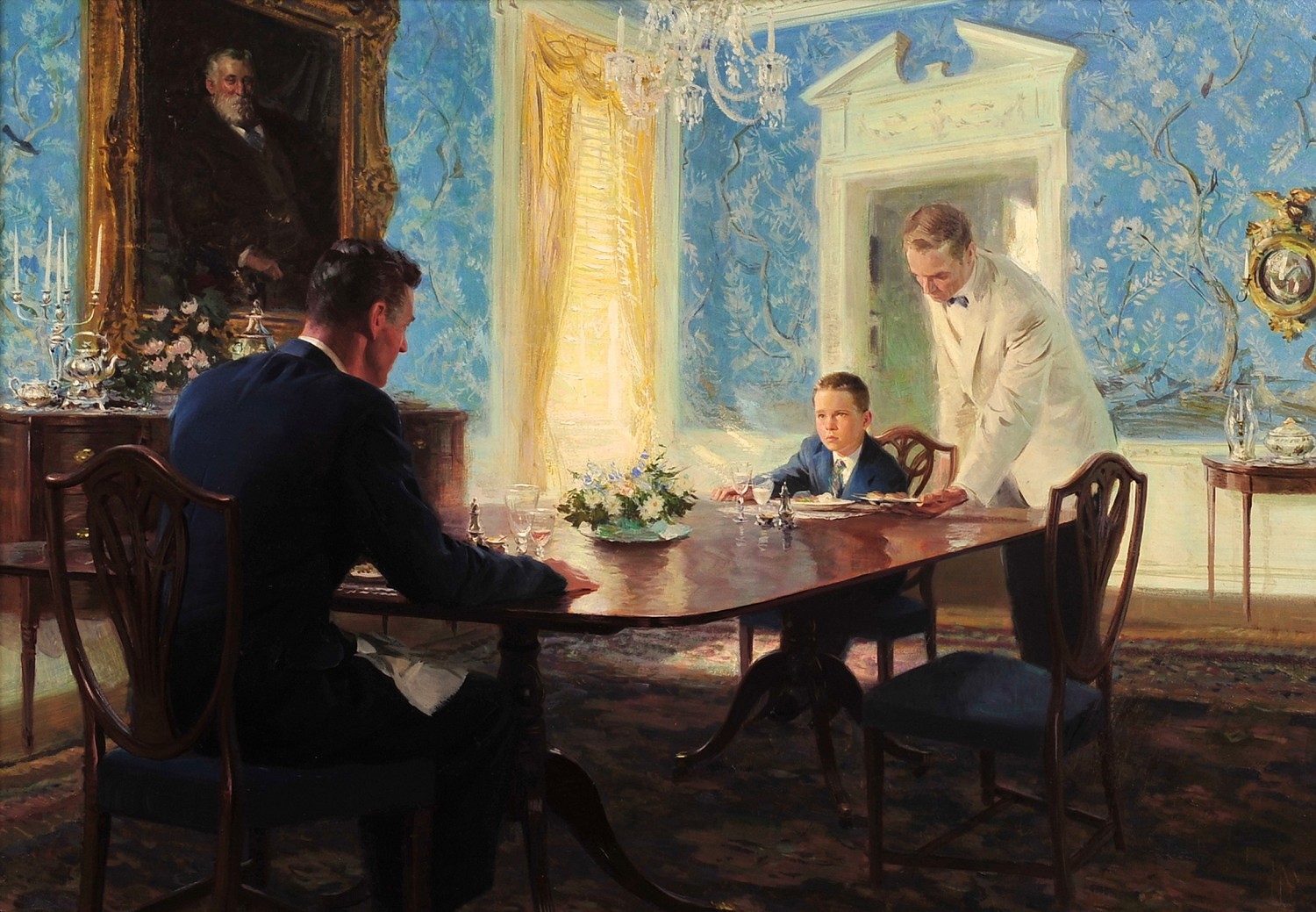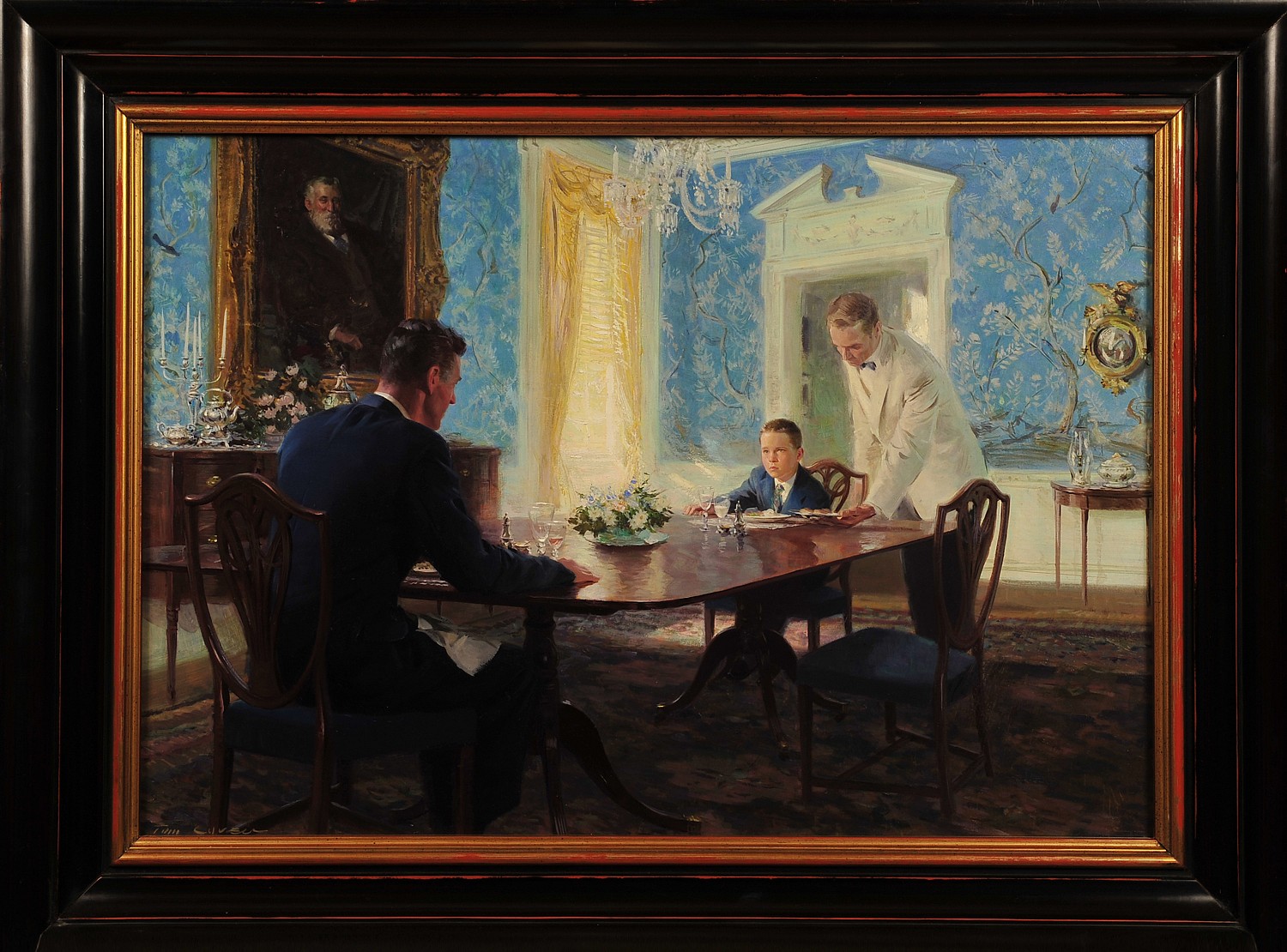""Every Sunday, Mowbray and the boy had dinner together"" Lot no. 167
By Tom Lovell (1909-1997)
1957 (Estimated)
18.70" x 27.00"
Oil on Board
Signed Lower Left
REQUEST PRICE
PURCHASE REQUEST
Story illustration for The Master Move by George Loveridge, published in Good Housekeeping, November 1957.
An excerpt from the story reads: “In the evening Mowbray dined at a mahogany table designed to seat ten persons. To his left, in an intricate, gilded frame, hung an oil portrait of his father — a man with a majestic, full gray beard and the same beaked nose that his son had, but with milder eyes (p. 237)…Every Sunday, Mowbray and the boy had dinner together, the two of them at the long, broad, polished table under the eyes of Peter Mowbray. Mowbray often had to fly hundreds of miles to be on time for Sunday dinner with his son, but he did not once fail to be there.” (p. 239-240)
Tom Lovell Biography:
A Native American finding a Raggedy Ann doll on a lonely western road. A man teaching his blond, gingham-dressed, settler wife how to shoot a rifle. A trio of Indians warming their hands over the chimney of a snow-buried cabin in an otherwise empty landscape. These are just three of the stories told through the art of Tom Lovell, considered by his peers one of the deans of Western art. But that's not all. He was equally famous for his exciting and thought-provoking illustrations for such magazines as Life, The Saturday Evening Post and National Geographic- as well as his stirring images of sweeping Civil War battles which were considered so definitive that they were telecast as part of the famous Public Television documentary on the conflict and published in the accompanying best-selling book.
Explore related art collections: Children / Family / Food / Men / 1950s / $20,000 - $50,000 / Fatherhood / Magazine Stories / Newly Researched
See all original artwork by Tom Lovell
ABOUT THE ARTIST
Had an extreme attention for detail and rarely completed more then a dozen major oil paintings a year. He was a Freelance illustrator for many well-known magazines including Colliers and the Saturday Evening Post and become known as a pulp illustrator. His work depicting life in the old west earned him his reputation of Dean of Western Art and allowed him to win just about every major Western Art prize that exist. He was voted into the Society of Illustrators in 1974 and was chosen to receive two Gold Metals.





